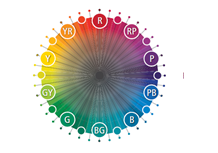We all grew up hearing fancy stories. How the king got a magical dress that can keep him safe against the weather. Or how a mermaid lives under the water, but her dress never gets wet. Okay, so those fantasies have come true with the advancement of science. How about you sleep on a bedsheet, and it will never get dirty? Because it has self-cleaning capabilities.
These impossible terms are now happening because of nanotechnology. This article will provide you with a skeleton of nanotechnology in the textile sector.
What is Nanotechnology ?
In easy terms, nanotechnology is a branch of science that manipulates atoms and molecules at a nanoscale to design, produce, and update the structures of a device or a system. In general, the scale is one or more divisions of 100 nanometres or less. Or it is easier to say that one nanometre is a billionth of a meter. It is responsible for creating advanced finishes, materials, and products in textiles.
Let’s know about the background
Every technical thing has come with a lot of effort. It means nanotechnology has also a long story. However, historical evidence demands that this word was first introduced by the American physicist and Nobel Prize laureate Richard Feynman. But in 1974, a Japanese scientist named Norio Taniguchi defined the term ‘nanotechnology’ properly for the very first time. According to him, “Nanotechnology mainly consists of the processing of separation, consolidation, and deformation of materials by one atom or one molecule.”
How nanotechnology meet textile:
What we have mentioned in the beginning is just a very small application. In reality, we can find nanotechnology in every corner of technical textiles. As it is an essential part of spacesuits, electrical textiles, and digital components, it can be easily included in functional fabrics and regular wear.
Image source:https://www.textileblog.com/nanotechnology-in-textile-industry/
But the combining process is little complicated. It is actually sum of some techniques.
- Electro spinning
- melt blowing
- biocomponent extrusion
- phase separation
- template synthesis
Properties offered by nanotechnology:
As we always say human only do things to maximize their benefits. So our textile only gets better features with a touch of technology. The following properties are enhanced here:
- Water and oil repellence
- Increase antistatic properties
- Resist wrinkles more efficiently
- UV blocking
- Enhancing the strength
- More antibacterial properties
- Flexible and lightweight fabric supercapacitor electrodes have been designed for energy storage.
- Now this is just the introductory part for our readers. There are thousands of other benefits that nanotechnology brings to textiles.
The future of nanotechnology in the textile industry:
Great possibilities are assured due to the potential of nanotechnology in textile products. The most commonly used product is thermos-regulated clothing, which can adapt to the weather or understand the health condition of the wearer. It is both fancy and productive for the user. But one common problem is that, as citizens of a developing country, we can’t have this kind of apparel available. Besides, we can’t afford it due to its overpriced. But here is the good news:. According to the report, the global market for nanotextiles should grow from $5.1 billion in 2019 to $14.8 billion by 2024. Moreover, our scientists are continuously looking for low-cost alternatives as well as more updated functions. Doesn’t it ensure a more promising future?

Reference:




